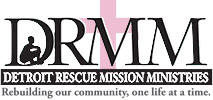A recent Detroit News report stated that Ann Arbor, Michigan is dealing with an influx of homeless people who have come to the city for refuge over the past several years. The increase is being attributed to Ann Arbor’s longtime reputation for being a city that embraces the poor. There are numerous social service agencies in the city, and University of Michigan students tend to be more generous toward the homeless who ask for money.
So what does this increase in the number of homeless mean for Ann Arbor? According to the Detroit News article, the police chief says panhandling was a huge problem this summer and he considers it the “Number one crime.” The city’s 75-bed homeless shelter has instituted a county residency requirement to discourage outsiders. To be admitted, the person’s last stable home address must be in Washtenaw County. And homeless tent camps have been erected by the “outsiders”— homeless individuals from other parts of Michigan.
It’s definitely an interesting situation. The homeless reportedly like Ann Arbor because of easy access to shelter, food, medical services and temporary job opportunities. Meanwhile, complaints have mounted from business owners and residents, and U of M students are being encouraged to give donations to organizations that help the homeless rather than to individuals.
At the Detroit Rescue Mission Ministries (DRMM), we service people from all over, as do many homeless shelters in big cities. It doesn’t matter where they are from or where they lived last. We offer services that will help put the disadvantaged on the path to long term success, such as health care, job placement assistance, and vocational training. And of course, we provide for their immediate needs: food, shelter and clothing.
But the homeless apparently perceive that a smaller city, like Ann Arbor, is safer and receives more federal, state and local funding for social services. Regardless of the number of resources, the most important thing to remember is that we all must be good neighbors and provide the most comprehensive assistance possible to give hope to the homeless and needy.




